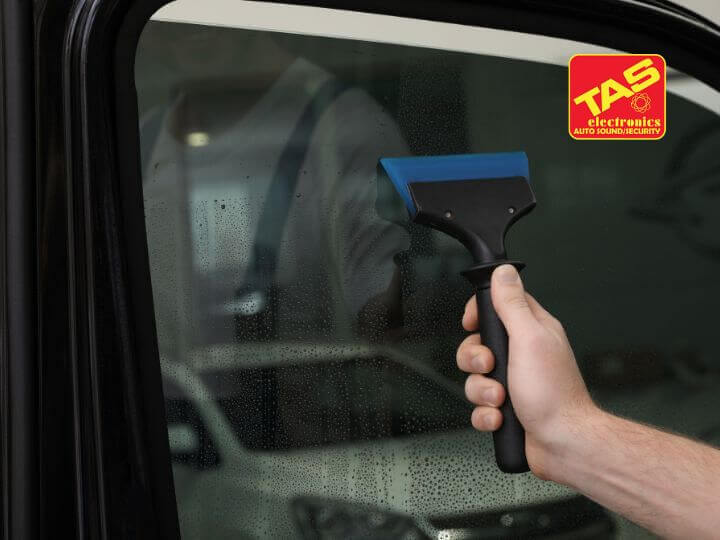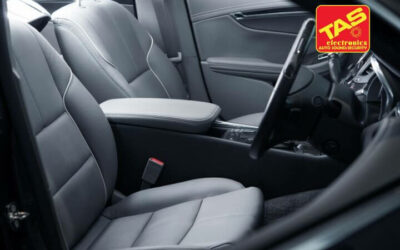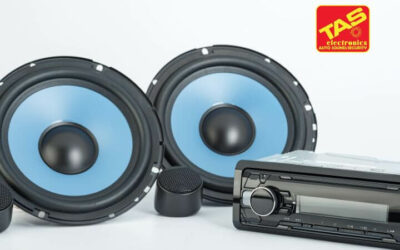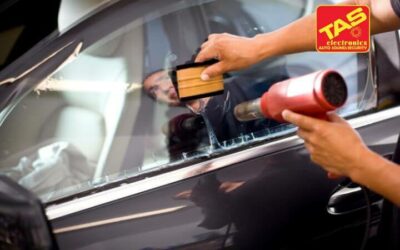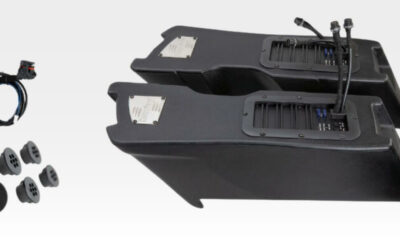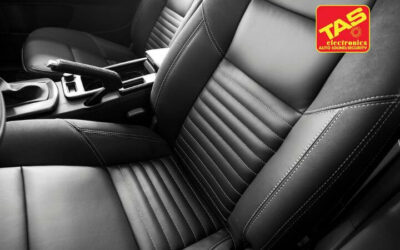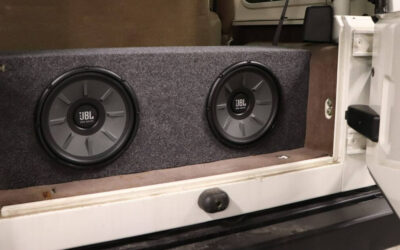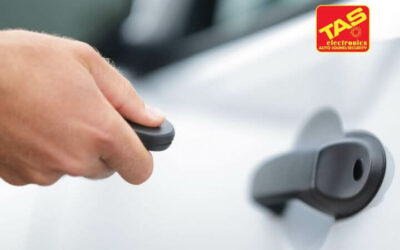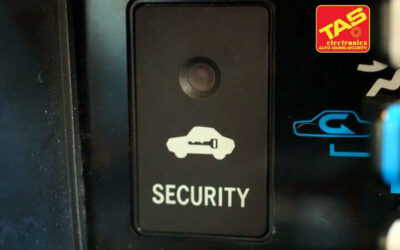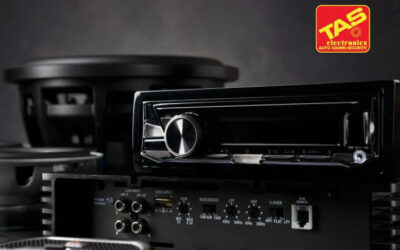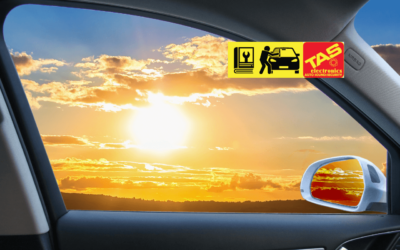This article provides an in-depth guide into everything you need to know about the world of tinted windows on luxury vehicles. Whether you’re a car enthusiast or just curious, we’ll be delving into the aesthetic appeal and functional benefits, the different types of window tint films, understanding the crucial window tinting laws, and the routine maintenance required for tinted windows. It also covers professional services for tinted window maintenance and helpful tips to preserve the lifespan of tinted windows. This comprehensive overview aims to give you insight into this intricate aspect of luxury vehicle customization, guided by the expertise of TAS Electronics, your go-to source for window tint services.
Understanding the Importance of Tinted Windows on Luxury Vehicles
Tinted windows are a prominent feature that significantly contributes to the distinct personality of a luxury vehicle. It’s not coincidental that most luxury cars come with tinted windows. The truth is, tinted windows have a twofold advantage: they enhance the visual appeal of the car and also serve a number of functional purposes. As the owner of a luxury vehicle, it is crucial to comprehend the full spectrum of benefits afforded by tinted windows and consider having them installed if your vehicle is not already equipped with them.
Aesthetic Appeal of Tinted Windows
Luxury vehicles are about a lot more than just point A to point B transportation; they represent a certain standard of built, quality, and aesthetics. Tinted windows undoubtedly contribute to the external aesthetic appeal of a vehicle. They give the vehicle a sleek, chic, and polished appearance that is congruous with the overall luxe vibe of premium cars. Tinted windows incorporate an element of mystery and privacy, sparking curiosity about who might be inside, thus adding to the allure of the vehicle.
The color and degree of the tint can be chosen to complement the exterior paint of the vehicle, further enhancing its aesthetic appeal. Darker tints provide a contrast, drawing attention to the shining accents and accessories on the car’s body, while lighter tints give a more seamless, cohesive look to the vehicle.
Functional Benefits of Tinted Windows
Beyond aesthetics, tinted windows offer essential functional benefits that can significantly improve your driving and travelling experience.
One key benefit is heat reduction. Tinted windows can block 35-65% of solar heat, depending on the grade of the tint. This keeps the interiors of your car relatively cooler, reducing the need for constant air conditioning, in turn, resulting in increased fuel efficiency. Tinted windows also block up to 99% of harmful UV rays, protecting the passengers inside the car as well as the car’s interior from sun damage.
Safety benefits of tinted windows are unignorable as well. In case of an accident, the thin film used for tinting can hold shards of broken glass together, minimizing the risk of injury to the vehicle’s occupants.
Furthermore, tinted windows enhance privacy. Whether your vehicle is parked or in motion, tinted windows prevent wandering eyes from peering into your car. This privacy can also keep your valuable belongings inside the car, like electronics, safe when you are not inside the vehicle.
Finally, due to its ability to reduce glare from headlights and sun, tinted windows promote visual comfort while driving, which is particularly beneficial while driving during the day and in brightly lit areas at night.
In summary, understanding the importance of tinted windows in luxury vehicles enables us to appreciate why most luxury vehicles come with tinted windows as a standard feature. Not only do they amplify the aesthetics of the vehicle, but also they offer crucial functional advantages, leading to a more comfortable and safer driving experience. The benefits of tinted windows extend beyond cosmetics, making them an excellent addition to any luxury vehicle.
Different Types of Window Tinting
In addition to the aesthetic appeal, window tinting is an effective way to control the amount of heat and light that enters your vehicle. Besides, it offers the necessary privacy and increases the life of your car’s interior by preventing fading and cracking due to the damaging UV rays. The window tinting industry has evolved significantly over the years, and today, there are four main types of window tinting options available: Dyed, Metalized, Carbon, and Ceramic. Each type has its own unique properties, benefits, and drawbacks, which we will discuss in the following sections.
Dyed Window Tint Film
A dyed window tint film is the most economical and simple form of window tinting. In this type, a dye is added to the film during the manufacturing process. The dyed film is then applied to the interior side of the window, blocking sunlight from entering into the car. The dye in the film absorbs the solar heat, thereby reducing the interior temperature of your vehicle.
On the downside, dyed window tints can give a hazy or cloudy appearance from the outside, which some people find unappealing. Furthermore, the dye can fade over time due to prolonged exposure to sunlight, requiring replacement sooner than other types of window tints.
Metalized Window Tint Film
As the name suggests, metalized window tint films contain small metallic particles that not only block sunlight but also strengthen the window. These films are highly durable and less likely to scratch, delaminate, or fade over time. In addition to heat reduction, metalized window tints also provide excellent glare reduction.
However, the metallic elements in the film can interfere with the functioning of electronic devices inside your car such as GPS systems, cell phones, and radio reception. Another downside is that the shiny appearance of metalized window tints might not be appealing to all.
Carbon Window Tint Film
Carbon window tint films offer a perfect balance between performance and aesthetics. These films contain carbon particles that effectively block up to 40% of infrared heat, keeping your vehicle cool. Unlike dyed and metalized films, carbon tints do not fade over time, meaning they maintain their color and quality for a longer duration.
Their dark, matte-finish enhances the appearance of your car and doesn’t interfere with electronic signals. On the downside, carbon window tint films are more expensive than the dyed and metalized films but their long-lasting nature and superior performance justify the high cost.
Ceramic Window Tint Film
Ceramic window tint films are the latest and most advanced window tinting option. They contain non-metal, non-conductive ceramic particles that have exceptional heat and UV resistance. Ceramic tints are capable of blocking up to 50% of solar heat without reducing visibility, making them a popular choice for car owners.
In addition, the ceramic film doesn’t interfere with cell phone and radio signals. Despite being the most effective at heat and UV reduction, they are the most expensive among all window tinting options.
Understanding Window Tinting Laws and Regulations
Window tinting is the process of applying a thin laminate film to a vehicle’s glass to darken it. People choose this for various reasons such as reducing glare, heat, and sunlight; enhancing privacy; and promoting a particular look. Even though window tinting may seem like a simple car enhancement, it is actually governed by various laws and regulations.
Understanding these laws and regulations is crucial for anyone looking to have their windows tinted. There are legal requirements on the degree to which you can darken your car windows which varies from region to region. Excessively dark windows can pose a danger because they limit the driver’s visibility and prevent eye contact between drivers, which helps in mutual awareness on the road. Yet, window tinting can also have safety benefits, including reducing dangerous glare and protecting against harmful UV rays.
Note, disregarding these tinting laws can lead to penalties, including fines and potential vehicle impoundment. Therefore, before a vehicle owner decides to customize their car windows, they should ensure they are compliant with their local and national laws.
The Role of Visible Light Transmission (VLT) Levels
Visible Light Transmission (VLT) refers to the percentage of light that can pass through a window. This is the primary measure used in tinting laws, which commonly stipulate the minimum VLT that a window film must allow. For instance, a VLT limit of 70% means that after tinting, at least 70% of visible light must still be able to pass through the window.
The role of VLT levels in window tinting laws is crucial. A lower VLT percentage implies a darker tint, which consequently reduces the visibility for the driver, especially during night-time. This increases the risk of accidents, leading many jurisdictions to impose regulations requiring a certain level of VLT.
Apart from visibility, VLT percentages also affect how much heat and UV radiation is blocked by the tint. Lower VLT percentages block out more heat and UV radiation, offering better protection against these harmful effects. However, they also limit the amount of natural light inside the car, which could affect visibility inside the vehicle.
International Window Tinting Laws and Regulations
Window tinting laws and regulations vary widely around the world. In the United States, each state has its own laws with varying degrees of restrictiveness. For instance, California law requires a VLT of at least 70% for the front side windows while back windows could have any level of tint. On the other hand, Michigan law only requires a VLT of 35% for all windows. Not adhering to these laws could result in hefty fines or even imprisonment.
In many European countries like Germany and France, window tinting laws are even stricter. Generally, their laws allow significantly lighter tints. For instance, Germany mandates at least 70% VLT for all windows, while France imposes a 30% VLT rule.
Meanwhile, in Australia and New Zealand, regulations are less stringent. The two countries allow lower VLT percentages, such as 35% and 30%, respectively.
These differences in window tinting laws emphasize the need for car owners to understand the specific laws in their jurisdictions before going ahead with window tinting. They also highlight the different factors that authorities take into consideration like climate, road safety concerns, and cultural preferences which inform regulation on window tinting.
Routine Maintenance of Tinted Windows
Taking care of tinted windows involves a thoughtful routine that protects the film from premature aging, scratches, and lifting. This maintenance routine should include regular cleaning, careful handling, and timely replacement of the tinted film. By following a strict maintenance routine, you can retain the appearance, performance, and durability of your tinted windows for a longer period.
The Do’s and Don’ts of Cleaning Tinted Windows
Cleaning tinted windows is a delicate process that requires a gentle touch, and the correct cleaning materials. Use a soft microfiber cloth and a cleaner designed specifically for tinted windows to avoid causing damage to the film. Avoid using harsh chemicals, as these can degrade the film and cause it to chip, peel, or fade. Clean the windows frequently, but not too vigorously, to remove dust and grime without damaging the film.
Do not use any sharp tools or abrasive scrubbers when cleaning tinted windows. These can scratch the tinted surface and lead to a ragged or uneven appearance. In addition, avoid cleaning tinted windows in direct sunlight or high heat, as these conditions can cause the water and cleaning agent to evaporate too quickly, which can leave streaks or water spots on the film.
How to Handle Scratches and Tears in Tint
Scratches and tears in the tinted film are not only visually unappealing, but they can also expose the underlying window glass to damaging elements, such as sunlight and heat. To repair minor damage, consider using a tint repair kit, which typically includes a small piece of tint film and an adhesive. Carefully remove any loose or damaged pieces of the existing film and then apply the replacement using the adhesive. Professional help should be sought for significant scratches or tears.
Preventing scratches from occurring is also an important part of window tint maintenance. Keep windows clear of sharp objects and observe caution when loading and unloading items that could potentially scratch the windows. Furthermore, remind children and pets to avoid scratching windows and teach them to treat these surfaces with care.
When to Replace Window Tinting Film
With time, even tinted windows that are well-cared for will experience wear and tear. The sunlight and heat exposure can cause the film to fade or turn purple, and contaminants can get lodged between the film and the glass, causing the tint to bubble. If the appearance or functionality of your tinted windows is noticeably deteriorating, it may be time to replace the film.
The average lifespan of window film is between five to ten years, but many variables can influence this timeline. If your window tint does not perform as it should, such as blocking out heat or providing privacy, even after proper cleaning and repair, then it is time to consider replacement. Always replace window tint film with high-quality product to ensure a longer lifespan and better performance.
Professional Services for Tinted Window Maintenance
Window tinting is a popular investment among many homeowners and business managers alike. Tinted windows offer numerous benefits such as added privacy, protection from harmful ultraviolet rays, heat reduction, and aesthetics towards every premise. However, like any other investments, window tints must be maintained to ensure their durability and functionality. This article will delve into understanding the provision and significance of professional services in the maintenance of tinted windows.
The Benefits of Professional Tinting Services
Routine and efficient cleaning of tinted windows is crucial in maintaining their quality. Engaging professional tinting services could provide a myriad of benefits. For starters, professionals have the proper training and the necessary equipment to maintain window tints. They are aware of the do’s and don’ts to avoid damage and premature peeling off.
By hiring an expert, you can rest assured that your window tints are cleaned using the correct solutions and techniques which extend their lifespan. Such service providers are experienced with various types of tints and how to handle them carefully. This specialized care can inhibit common damage like scratches, fading, and bubbles and keep the tints looking new and clear.
Also, professional service providers often offer warranties for their work. This can provide peace of mind knowing that if something goes wrong soon after the maintenance is performed, the company may cover the repairs at no additional cost.
How to Choose a Reliable Window Tinting Provider
Knowing the benefits of professional maintenance services for tinted windows is one thing, choosing a reliable service provider is another. One of the most vital aspects to consider is the provider’s reputation and experience in the industry. You may want to read reviews or ask for recommendations from others who’ve used their services.
Additionally, consider the professionalism of the service provider. A good service provider will be able to properly articulate what the process will entail, the time it will take, and may even provide aftercare advice.
The range of services provided is another factor to consider. Some companies may provide maintenance services along with installation. Others might specialize only in particular types of tints. Knowing what a company can offer will ensure that you get the best suitable service.
Pricing is also a key element to take into account. While it’s true that you often get what you pay for, it is essential to find a service provider that offers a reasonable price for quality service. Most companies will be willing to provide a free quote, allowing you to compare and decide which options work best for your budget.
In essence, the maintenance of tinted windows is vital in ensuring their longevity and functionality. Professional services provide a competent, worry-free, and efficient way to maintain window tints to keep them in excellent condition all year long.
The Importance of Proper Window Tint Maintenance
Tinted windows are a great addition to any vehicle, offering numerous benefits such as privacy, reduced glare, and protection from ultraviolet rays. Despite their many advantages, tinted windows require a level of care and maintenance to ensure they maintain their function and aesthetic appeal over time. The lifespan of tinted windows is often at risk due to exposure to various elements, improper cleaning methods, and other unforeseen circumstances. However, with the right knowledge and tools, one can foster the durability and longevity of tinted windows.
Preventing and Handling Sun Fading Damage
Although window tints are designed to block out harmful UV radiation, consistent exposure to sun can sometimes degrade the tint over time. When the film’s ultraviolet inhibitors lose their effectiveness, the tint begins to fade or turn purple. This not only diminishes your vehicle’s aesthetic value but also removes the layers of protection for your car’s interior.
However, there are some practical steps one can take in order to minimize this. Park your vehicle in shaded areas during the most intense hours of sunlight, ideally under a carport or inside a garage. Applying a UV protectant on the windows can also help slow down the fading process. In the event that significant fading has occurred, it may be necessary to have the tint re-installed by a professional to restore your window’s original condition.
Avoiding Scratches and Other Physical Damages
Abrasive materials can easily damage tinted windows. This includes everything from rough cleaning tools to accidental scratches when placing hard or sharp objects against the window. To prevent scratches, avoid placing items like keys or other sharp objects near the windows. When cleaning your windows, use a soft cloth and gently wipe the area to avoid scratching the tint.
Using seat belts conscientiously is another important point of consideration. When retracting, seat belts can sometimes slap against the window and cause scratches over time. Making sure to hold the seat belt and guide it back into place can mitigate this.
Mindful Cleaning
Not all cleaning solutions are suitable for tinted windows. Many general glass cleaners contain ammonia, which can cause your tint to deteriorate over time. Instead, opt for window cleaning solutions specifically designed for tinted windows. Ensure to check the product label to see if it is tint-friendly before application.
It’s also important to adopt the correct window cleaning technique to avoid damaging your tints. Do not apply heavy pressure, and avoid using any type of brush or hard cloth. Instead, you should use a clean, soft cloth or a squeegee. When done correctly, cleaning should remove dirt and grime without damaging the window tint.
In summary, maintaining your tinted windows and preserving their lifespan goes beyond simple cleaning. It involves being careful about sun exposure, avoiding physical damages, and using the appropriate cleaning solutions and techniques. By taking these precautions, you can ensure your tinted windows last as long as possible, providing you with sustained comfort and protection.
1. What is the proper method for cleaning tinted windows on my luxury vehicle?
Utilize a non-ammonia cleaner and a soft microfiber cloth to clean your luxury vehicle’s tinted windows. Avoid using abrasive tools or harsh chemicals that can damage the tint or cause peeling.
2. How often should I be cleaning my tinted windows?
Cleaning frequency should be based on the vehicle’s usage. However, in order to maintain their appearance, tinted windows on luxury vehicles should ideally be cleaned at least once a month.
3. Are there certain conditions to avoid with tinted windows?
Extreme heat or cold can cause the tint to bubble or crack. Although tinted windows have UV protection, prolonged exposure to extreme sunlight should be avoided to extend the lifespan of the tint.
4. How can I prevent scratches on my tinted windows?
Avoid using sharp objects inside the vehicle and ensure to roll down the windows when removing bulky objects to prevent scratching or damaging the window tint.
5. Can I use my car’s defrosters without damaging the tint on my windows?
Yes, using the vehicle’s defrosters will not damage the window’s tint. The adhesive used during the tint application is designed to withstand the heat produced by defrosters.
6. What is the lifespan of tinted windows on luxury vehicles?
Typically, professional-grade window tint can last up to 10 years on luxury vehicles, with proper maintenance and care. However, longevity also depends on the quality of tint material and exposure to heat or UV rays.


